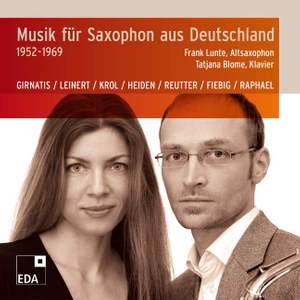The 1930s saw composers in Berlin beginning to use the saxophone as a classical instrument ¬– the alto sax paired with the piano being a particular favorite. But alas, the heyday of the classical saxophone in Germany was all too short. The Nazis’ cultural policy was the kiss of death for this pariah instrument. Yet a good number of works for the concert saxophone still emerged in the face of this restrictive environment. Some appeared in Berlin, others were created in the exile that many composers had to choose after 1933. Only a handful of works for alto sax and piano were written in Germany after the war, and it wasn’t until the 1980s that this format finally enjoyed a rebirth. The four-part series “Music for Saxophone from Berlin / Music for Saxophone from Germany” offers a selection of works for this distinctive liaison of instruments – from pre-war Berlin, post-war Germany, and again from Berlin’s flourishing musical life at the turn of the millennium. Most of these are world-premiere recordings. “Music for Saxophone from Germany” sheds light on the saxophone situation against the background of the dogmas and judgments of post-war modernism. The majority of avant-gardists shunned the saxophone, considering it “dubious.” But composers using tonal and free-tonal styles made great use of the instrument and its image in a language that represented a continuation of classical modernism. This collection covers the 1950s and 60s by presenting a generation of composers who banged the drum for a combination of instruments that was again considered inappropriate.



